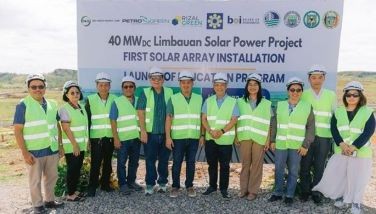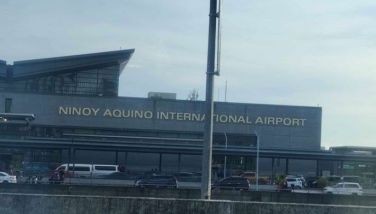Fast solution needed

Conclusion
Public transit is a broad term that includes above-ground trains, subways, buses, trams and even ferries. Seven of the top cities hailed for their mass transit systems are in Asia, with Singapore, Shanghai, Taipei, and Japan picking up the accolades for the continent, according to a report from CNN Travel.
A Statista.com report said that the most efficient countries in train transport services in 2019 were Japan, followed by Hong Kong, Switzerland, Korea and Singapore.
According to a World Economic Forum article, the strength of a city’s public transport system majorly impacts city dwellers’ lifestyles. It emphasized that an efficiently run system can not only encourage workers and tourists to travel through cities but can provide more equal opportunity access to additional mobility modes, jobs, shopping centers and more.
The 2022 Urban Mobility Readiness index, meanwhile ranked Metro Manila among the worst cities across the globe both in terms of public transportation (56th of 60 cities), urban mobility readiness (58th) and sustainable mobility (48th).
The 17-km MRT Line 3 is aging and although the recent general overhaul and rehabilitation may have given it a life extension of five years, maintainability will become the primary concern.
In its unsolicited proposal (USP) to government, Metro Pacific Investments Corp., which through Light Rail Manila Corp. (LRMC) manages and operates LRT1, together with Japan’s Sumitomo, emphasized that if accepted, the long-time objective of the government of closing the loop between MRT3 and LRT1 will be achieved through train operations, resulting in passenger convenience, reduced travel time expense, and more importantly, mitigate the traffic congestion along the combined alignment and especially along EDSA.
Sumitomo was the original designer, builder, and initial maintenance provider of MRT3 from 2000 to 2012 and then the rehabilitation and maintenance provider from 2019 to 2025. It is also an exclusive source of critical spare parts for the existing 72 CKD light rail vehicles.
A solicited proposal route, which the Department of Transportation is reportedly favoring will take a longer time to award since DOTr and its consultants will need time to conceptualize, conduct a technical due diligence, and accurately define and cost the scope of works. A USP, on the other hand, will ensure smooth and timely transition by the end of the government’s built-lease-transfer (BLT) agreement with the Sobrepeña-led group in July 2025, it was pointed out.
It was further emphasized that accepting the proposal would not only avoid extending the current R&M (rehabilitation and maintainance) contract for MRT3, which costs P166 million a month for maintenance alone, but would also immediately eliminate the P1.38-billion annual subsidy of government to MRT3. Full operation and maintenance risk will be borne by the proponent.
To address concerns about better bids from other interested parties, there is still public competition among qualified proponents even if the government takes the USP route for MRT3 through the Swiss challenge. On the other hand, a solicited tender may not be able to eliminate bidders without the proper technical and financial competencies, it was further noted.
Synchronized with the retirement of the MRT3’s 72 CKDs starting 2035, MPIC and Sumitomo are proposing to replace the fleet with new trains.
They are also proposing the rehabilitation of the current passenger transfer facilities between LRT 1 and MRT3 at Taft Avenue through the construction of the South interconnection facility, adding that MPIC and Sumitomo are in a unique position to pursue integration between the two lines since MPIC owns majority of LRT1’s concessionaire. A full integrated train operation can be achieved, resulting in a combined train service carousel.
What’s more important though is that integrating MRT3 and LRT1 can reduce traffic volume in EDSA by a whopping 23 percent.
A report from WeForum noted that competitive bidding arrangements entail publicized solicitation of requests from proposal from interested parties, followed by a selection process that often includes criteria based on both price and quality of services offered. But they present their own challenges. For instance, they are often expensive to administer, time-consuming, and requires significant amounts of preparatory resources (e.g. pre and full feasibility studies) that need a high level of sophistication from policy-makers, regulators, and administrators to implement. In addition, they tend to limit innovation, it added.
The DOTr has been saying that it prefers a solicited bidding process for the privatization of MRT3 to gain the upper hand and to be able to lay out the terms of the contract in their own accord. But even a USP allows the government to put it in its wishes. Both solicited and USPs have their own advantages and disadvantages. But again, a fast solution to the traffic problem is something that we badly need. And a USP seems to provide that, at least for MRT3.
Our country is losing billions of pesos every day to traffic. We cannot afford to delay adopting a fast solution to this burgeoning and embarrassing problem. We no longer want to be the laughing stock of the world just because of our traffic situation.
According to NEDA, what the President wants is a comprehensive and holistic approach to solving the traffic problem. If there is a chokepoint in one, it affects the whole system. But time is also of the essence. Integrating the operations of LRT1 and MRT3, two of the busiest transport modes in the metro by closing the loop can be achieved faster by having a common operator.
Eventually, interoperability of all train systems and integrating them with other public transport modes for better last mile connectivity should be the goal if we want to achieve economic progress.
For comments, email at mareyes@philstarmedia.com
- Latest
- Trending




















